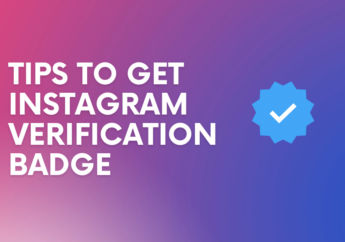Hashtags For Instagram: How To Use Them Effectively
by Abdul Aziz Mondal social media 28 October 2022

An effective hashtag strategy is one of the most critical steps in developing a successful Instagram marketing strategy.
This will include using popular and niche hashtags and utilizing third-party tools to track performance. Here are some tips to get you started.
This will help you maximize your reach and boost your discovery.
Developing an Effective Instagram Hashtag Strategy
To develop an effective Instagram hashtag strategy, you must first understand what your audience is searching for. Once you know what your audience is looking for, you can choose popular hashtags for your content. Once you have selected your hashtags, you can measure how well they work by tracking engagement rates. You can also test different hashtags to find out which ones work best.
One of the most important aspects of an Instagram hashtag strategy is to use time-sensitive content. Because social media is constantly changing, it is vital to use hashtags that are relevant to the current time. Specifically, you should use hashtags related to the time of year, season, week, day, or event you’re promoting.
Using a hashtag helps you reach new people who are interested in your content. Therefore, it can have both short-term and long-term benefits. For instance, when people search for a specific hashtag, they will see more posts using that particular hashtag.
However, using the same hashtag can generate results that are inconsistent. To find out which hashtags are most effective for your Instagram content, track your engagement rate. The more engaged your audience is, the more likely they are to see your content.
1. Using Popular Hashtags
When it comes to utilizing hashtags on your Instagram account, you can take the time to research what others are using. These hashtags are useful for attracting like-minded people to your account. However, it is important to keep in mind that you shouldn’t use a hashtag that’s too generic. Instead, you should use a hashtag that’s related to your niche or brand.
Choose hashtags that relate to your content and your audience’s interests. For example, if your target audience is vegan, they may be searching for vegan desserts. Use vegan hashtags to attract these people.

Be sure to check banned hashtags, and research your competitors’ accounts and hashtags to get an idea of what people are searching for in that category. Also, check your hashtags regularly to see which hashtags get the most engagement.
If you’re a nature lover, use the #nature hashtag for all your nature photos. Another popular Instagram hashtag is #Tbt, which is used to share old photos. Similarly, the #followme hashtag, which is related to #followforfollow and #likeforlike, is used by Instagrammers who want to build a following. It can also be used as a way to indicate that you are traveling.
2. Use Free Tools to Find Hashtags or Brand Your Account
There are many free tools that you can use to find hashtags for your posts. For example, you can use Hashtagify to find popular and related hashtags. You can also use the website to see the most popular hashtags on Instagram.
In addition, you can use Google AdWords Keyword Planner to find hashtags that are related to your business. This tool can help you find long-tail keywords that you can use as hashtags.

You can also use the hashtag generator on Ingram. This tool generates relevant hashtags based on the content of your post.
Lastly, a random Instagram name generator can help you find creative names for your brand. This can be helpful if you’re having trouble coming up with a name on your own.
3. Using Niche Hashtags
The best hashtags for Instagram are those that are specific to the content you want to promote. These are low-volume and attract fans who have a specific interest in your brand, service, or product. For example, you could use hashtags for your industry, local businesses, radio stations, or even music. Using these hashtags will help you stand out from the competition.
You can also use location-based hashtags, which describe the location of your post. These hashtags are especially helpful for connecting with those who live in the same place as you do. For example, you can use #EiffelTower to reach Parisians who are planning a trip there.

Influencers and travel bloggers can also use location-based hashtags to attract people who are likely to visit the place.
When choosing a hashtag for Instagram, you should be mindful of the competition. If you use a hashtag that is too popular, you risk getting lost in the sea of content that is not relevant. For example, if you sell Italian pizza, you can choose a hashtag with around 473 posts and a maximum of 8,1k. The low competition in these niche hashtags means fewer competitors, and this makes posting content more relevant.
5. Using Third-Party Tools to Track Performance
The use of third-party tools can improve your social media performance. For example, Iconosquare can help you manage multiple brands through one dashboard and export data by time zone. It also offers benchmarking and competitor tracking features that can help you compare your brand’s performance to competitors. In addition, Iconosquare helps you engage with your followers live and monitor brand mentions.
While native Instagram analytics can be helpful, their scope is limited. They’re not available on desktops and cannot be shared.

However, if you’re looking for a comprehensive solution, consider using a third-party tool, such as Agorapulse. This tool allows you to export your analytics and see how well each campaign performs.
Hootsuite is another tool that can help you track your Instagram performance. The paid version of the tool allows you to create unlimited reports and compare historical data. In addition, you can create reports for other users to see how they performed.
Conclusion
Hashtags are a great way to connect with others on Instagram who have similar interests. However, it’s important to use them wisely in order to avoid getting lost in the sea of content. Be sure to choose niche hashtags that are specific to your brand, service, or product. You can also use location-based hashtags or third-party tools to track your performance.
Additionals:







































































































